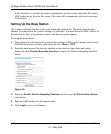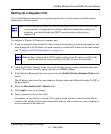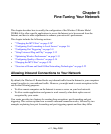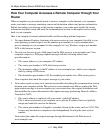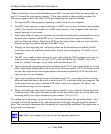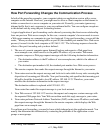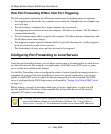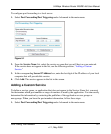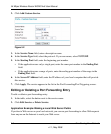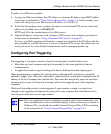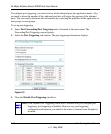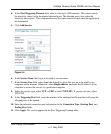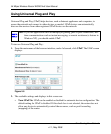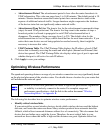
54 Mbps Wireless Router WGR614v8 User Manual
5-6 Fine-Tuning Your Network
v1.1, May 2008
How Port Forwarding Differs from Port Triggering
The following points summarize the differences between port forwarding and port triggering:
• Port triggering can be used by any computer on your network, although only one computer can
use it at a time.
• Port forwarding is configured for a single computer on your network.
• Port triggering does not need to know the computer’s IP address in advance. The IP address is
captured automatically.
• Port forwarding requires that you specify the computer’s IP address during configuration, and
the IP address must never change.
• Port triggering requires specific outbound traffic to open the inbound ports, and the triggered
ports are closed after a period of no activity.
• Port forwarding is always active and does not need to be triggered.
Configuring Port Forwarding to Local Servers
Using the port forwarding feature, you can allow certain types of incoming traffic to reach servers
on your local network. For example, you might make a local Web server, FTP server, or game
server visible and available to the Internet.
Use the Port Forwarding screen to configure the router to forward specific incoming protocols to
computers on your local network. In addition to servers for specific applications, you can also
specify a default DMZ server to which all other incoming protocols are forwarded. The DMZ
server is configured in the WAN Setup screen, as discussed in “Setting Up a Default DMZ Server”
on page 4-6.
Before starting, you need to determine which type of service, application, or game you will
provide, and the local IP address of the computer that will provide the service. Be sure the
computer’s IP address never changes.
Tip: To ensure that your server computer always has the same IP address, use the
reserved IP address feature of your Wireless-G Router. See “Using Address
Reservation” on page 4-3 for instructions on how to use reserved IP addresses.



